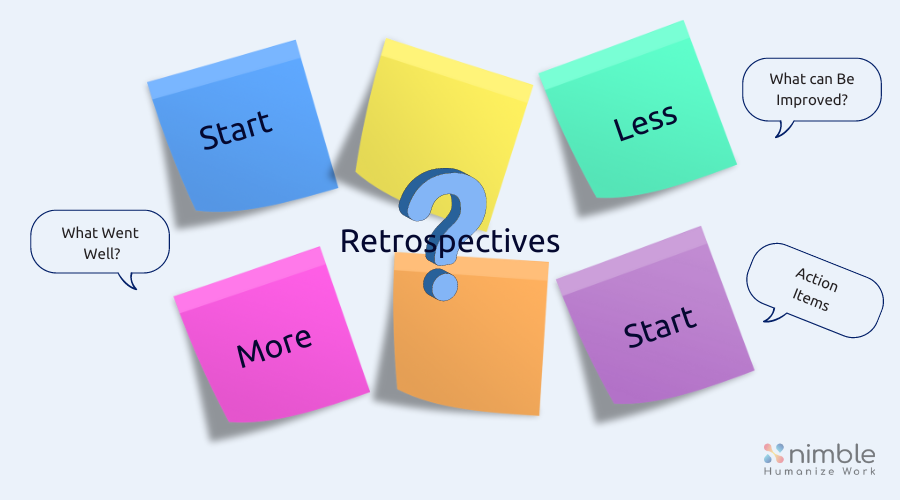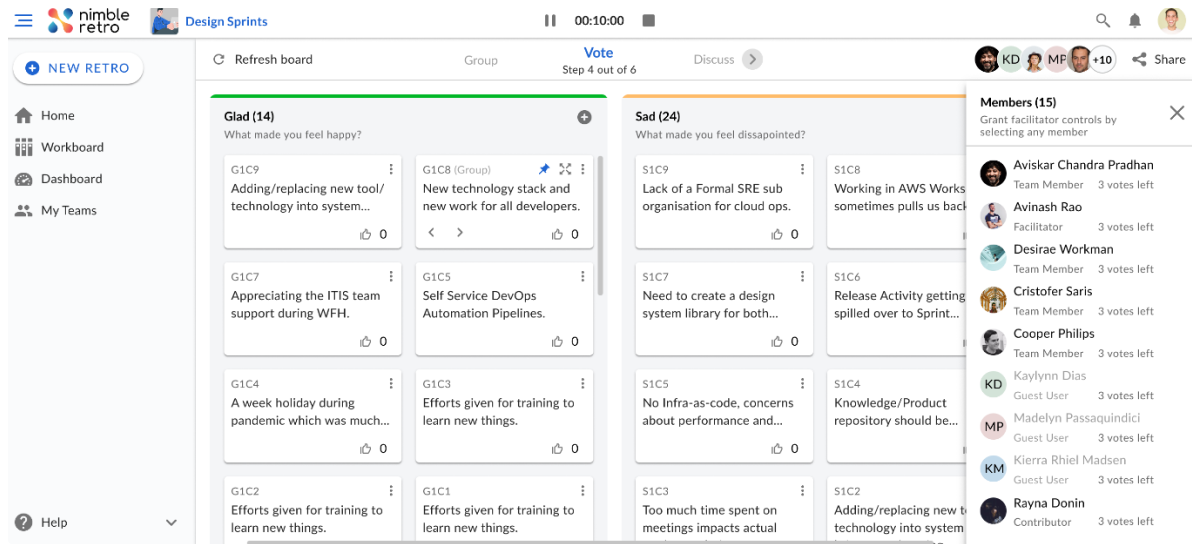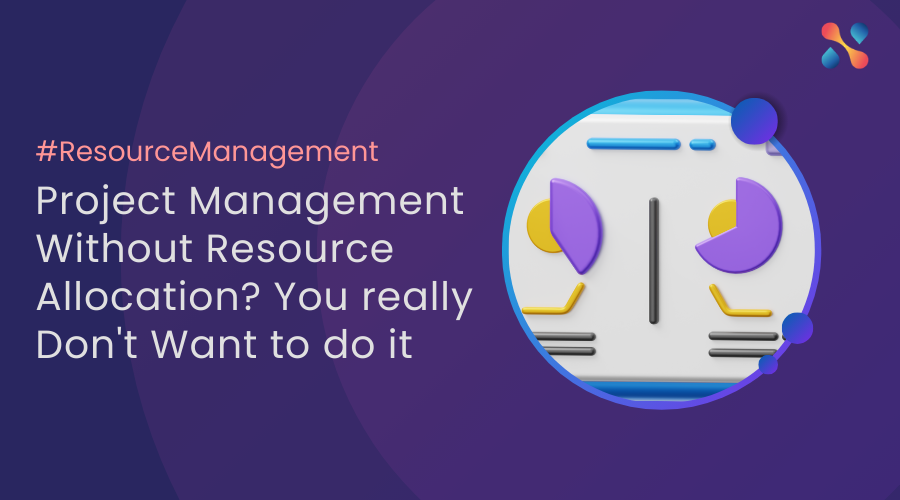A retrospective meeting, often associated with agile methodologies like scrum and kanban, is a crucial opportunity for a team to reflect on their recent work and identify areas for improvement. Retrospectives should ideally be done at a regular cadence. However, what happens if your team does not find them engaging or useful. What if there is little interest in doing them? To help make sure that your team looks forward to it, here are five tips to make a retrospective meeting more productive:
1. Create a Safe and Inclusive Environment
At the heart of a successful retrospective lies the role of the facilitator. The retrospective facilitator serves as the orchestrator of an environment where open communication thrives. The facilitator’s primary task is to establish a non-judgmental space, crafting an atmosphere where team members feel secure in sharing their thoughts and perspectives. By emphasizing that the retrospective is a forum for improvement rather than a blame game, the facilitator lays the groundwork for a culture of trust, essential for fostering honest and open feedback.
Facilitation techniques are very important and picking the right one is essential to ensure that the retrospective is productive. Techniques such as round-robin sharing ensure that each individual has a designated platform to express their thoughts, promoting equal participation. Anonymous feedback serves as an additional layer, allowing team members to contribute without reservations, especially when discussing sensitive matters.
These facilitation strategies do more than just manage the logistics of a meeting; they actively enhance participation, contributing to a more inclusive and effective retrospective process. By ensuring that every team member has a voice and that their insights are valued, the facilitator cultivates a collaborative atmosphere. In this environment, ideas and experiences are freely shared, laying the foundation for a continuous improvement mindset. The facilitator’s use of these techniques becomes the catalyst for a dynamic, engaging, and fruitful retrospective that propels the team towards ongoing enhancement and success.
2. Focus on Specifics and Actionable Items
Following the establishment of a trustful atmosphere, the retrospective facilitator should delve into a detailed discussion, steering away from vague or general observations. The focus should shift towards concrete examples, pinpointing both successes and areas requiring improvement.
Crucially, the facilitator should guide the team towards identifying specific actions to address improvement areas. This transforms insights into tangible changes, ensuring the retrospective is not merely a platform for venting concerns but a proactive session with actionable outcomes. This step is pivotal in converting discussions into practical strategies, fostering a sense of accountability, and reinforcing the purpose of the retrospective as a catalyst for tangible improvements.
3. Follow a Structured Format
Optimizing the productivity and value of your project team’s retrospectives involves adopting a consistent and well-defined structure for these crucial meetings. Several widely embraced formats, such as the Start-Stop-Continue model, the 4Ls (Liked, Learned, Lacked, Longed for), and the Sailboat (Wind, Anchor, Island) retrospective, provide frameworks that guide discussions effectively. Utilizing tools like NimbleRetro further streamlines the process, ensuring teams adhere to a consistent structure across retrospectives.
The importance of a structured format extends beyond uniformity; it plays a pivotal role in maintaining focus and guaranteeing that key aspects are addressed. Whether it’s reflecting on what worked well, pinpointing areas for improvement, or recognizing elements to sustain, a predetermined structure acts as a roadmap, guiding the team through a comprehensive evaluation. This approach not only enhances the organization of discussions but also facilitates a more efficient and results-driven retrospective experience, ultimately contributing to a continuous improvement ethos within the team.
4. Time Management
Implementing time-boxing in retrospective sessions is essential for integrating them seamlessly into the team’s schedule. Mindful of time constraints, it’s crucial to maintain a reasonable duration for these meetings to sustain engagement and stave off fatigue. Striking this balance is paramount to keep the team focused and prevent distractions, ensuring that the retrospective remains a productive and purposeful exercise.
Allocate specific time slots for each agenda item, fostering a structured approach to the meeting. If discussions begin to extend beyond their allotted time, consider employing strategies such as parking certain topics for subsequent discussions or addressing them outside the retrospective setting. This adaptive approach ensures that important matters receive due attention while respecting the team’s time commitments and sustaining the efficiency of the retrospective process. Time-boxing not only instills discipline in the meeting’s flow but also reinforces the idea that retrospectives are valuable exercises integrated into the team’s regular rhythm rather than disruptions to their workflow.
5. Celebrate Achievements
In the quest for a productive project retrospective, it is important to pause and actively celebrate successes. This deliberate recognition of accomplishments serves as a morale booster, instilling a sense of achievement within the team and reinforcing positive behaviors. Celebrating successes plays a crucial role in creating a balanced retrospective environment. While the primary focus may be on dissecting challenges and addressing problems, taking the time to spotlight and appreciate what went well provides a holistic perspective. This deliberate celebration injects positivity into the retrospective, ensuring that the team doesn’t solely dwell on shortcomings but also embraces accomplishments with enthusiasm.
By incorporating celebrations into the retrospective, a dynamic is established where the team becomes more accustomed to appreciating its strengths and learning from successes. This positive reinforcement not only uplifts spirits but also fosters a culture that values continuous improvement, with the understanding that success, no matter how small, is an integral part of the team’s journey. Ultimately, the acknowledgment and celebration of successes contribute significantly to a constructive and motivating retrospective experience.
In summary, the retrospective is a continuous improvement process to iteratively enhance the team’s performance. Project teams should regularly assess and adjust their retrospective process based on feedback and outcomes to ensure it remains effective for your team’s unique dynamics and challenges. By utilizing the five tips above, project teams can ensure that retrospectives are a useful and helpful tool that can help the team improve its performance. Check out how NimbleRetro can make your retrospective session a breeze. Signup for a free trial.








